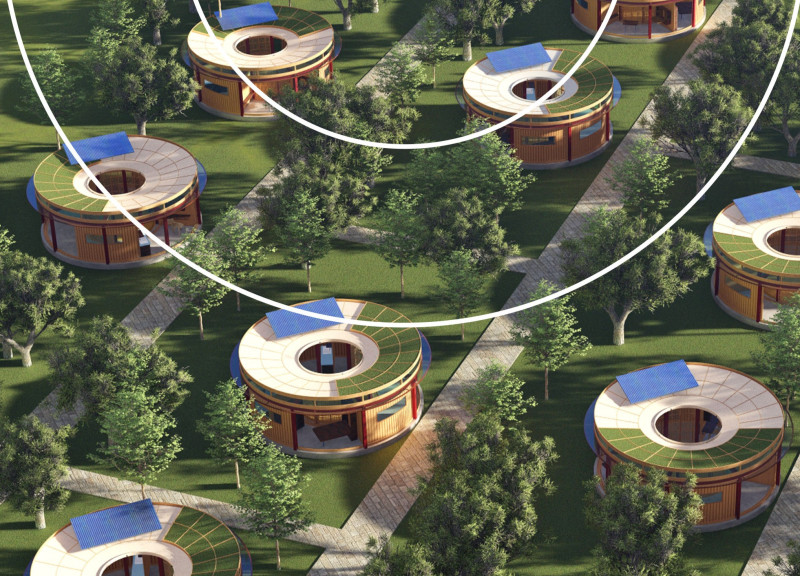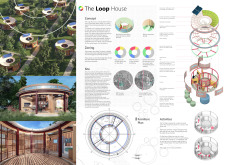5 key facts about this project
The Loop House presents a fresh approach to residential living in Dhaka, Bangladesh, a city known for its high population density. The design reimagines how a home can function, focusing on adaptability to meet the varied needs of its inhabitants. The circular layout is central to this concept, featuring movable walls that allow for dynamic spatial transformations. This innovative approach creates an environment that promotes interaction and optimization of space throughout daily activities.
Design Concept
At the heart of the Loop House is the idea of a living system that adjusts according to its users. The architecture incorporates four movable rails, enabling both interior and exterior walls to rotate. This flexibility permits the transformation of small, divided areas into larger spaces as needed. As people go about their day, the home can change to accommodate quiet moments or social gatherings, shifting the conventional definitions of residential boundaries.
Functional Zones
The design effectively divides the home into four main zones: toilet, kitchen, work or living area, and bedroom. These sections are not fixed; they can vary in size and location, allowing for a high degree of customization. By empowering residents to modify their surroundings, the Loop House supports diverse ways of living and encourages fluid interactions between different areas. This adaptability is particularly significant in urban environments, where every square foot counts.
Central Courtyard
A central courtyard acts as a key element in the Loop House. It connects the indoors with the outdoors, enhancing the living experience. This open-air space supports movement and encourages social interactions among residents. By allowing natural light and fresh air to flow through, the courtyard creates an inviting atmosphere that invites people to gather, relax, or even participate in recreational activities. It plays a crucial role in the overall design, enriching daily life within the home.
Materiality and User Interaction
While the specific materials used are not detailed, the design emphasizes lightweight and movable components to promote flexibility. This choice of materials allows the architecture to evolve alongside the needs of the occupants. The intention is to create spaces that respond effectively to user engagement, making daily activities smoother and more enjoyable.
The Loop House embodies a clear understanding of how modern living should function, emphasizing the importance of adaptability, connection, and user control. Each aspect of the design contributes to a thoughtful integration of space and experience, culminating in a home that evolves with the lives of its residents.



















































